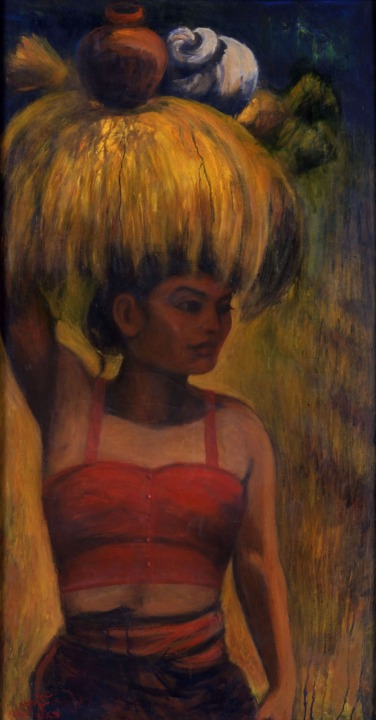Persagi
In Quest of the Independence in Indonesian Art
In 1938, the Union of Indonesian Painters—Persatuan Ahli-Ahli Gambar Indonesia in Indonesian, or ‘Persagi’ for short—was formed on the island of Java, in what was then the Dutch East Indies (present-day Republic of Indonesia), amid a growing sentiment of nationalism. This can be called the first modern art movement in Indonesia. Although Agus Djaya (1913–1990) was the group’s leader, it was the charismatic Sudjojono (1917–1986) who provided a theoretical foundation for the movement and enjoyed broad popularity. He called the prevailing style of idealized landscape painting “Mooi Indie (Beautiful Indies),” using a historical Dutch phrase to harshly criticize such work as meaningless and merely pandering to the tourist taste for exotica. Sudjojono appealed to Indonesian painters to instead face the reality of the colonial East Indies, to express the real spirit of Indonesia. His words reflected a desire for national independence even prior to the establishment of a modern individual subject. Persagi’s activities came to a sudden halt after only a short period of time and it was then dissolved into two groups formed by the occupying Japanese Imperial authorities: the ‘Centre of the People’s Power, known as Putera (short for Pusat Tenaga Rakyat), and the ‘Institute for People’s Education and Cultural Guidance’ (known in Indonesian as Poesat Keboedajaan and in Japanese as Keimin bunka shidōsho).

Agus Djaya Suminta "Back from the Rice Field" 1944 oil on canvas

Hendra Gunawan "Looking for Lice and Kerokan" c.1950 oil on canvas
